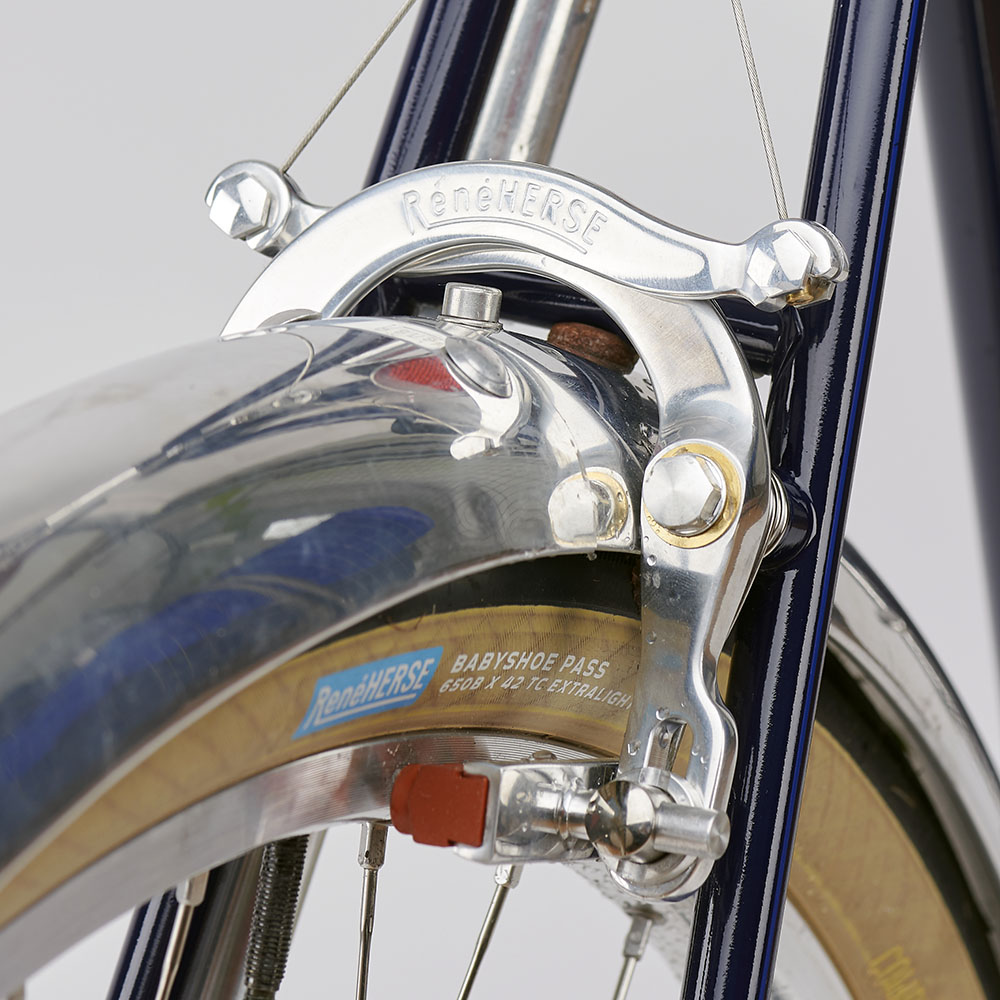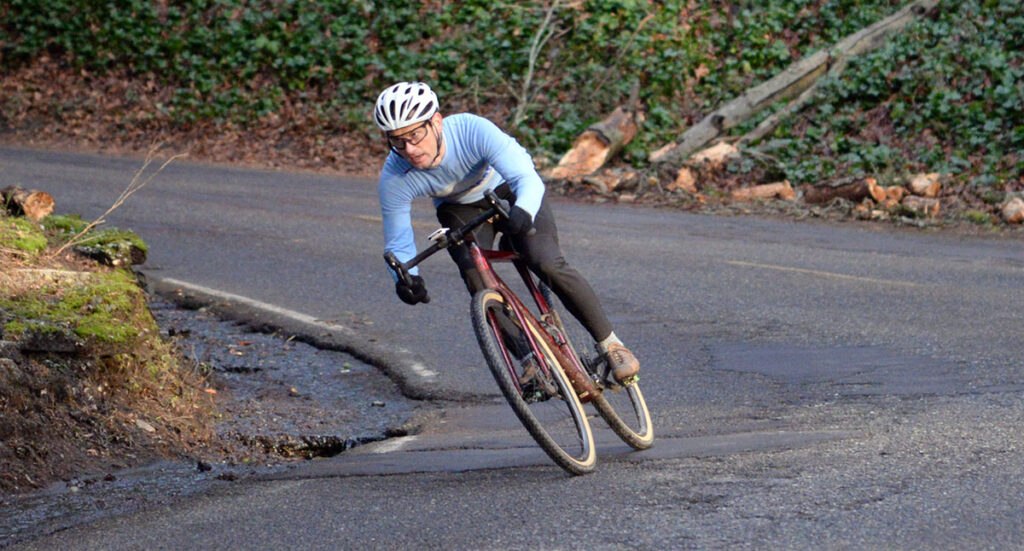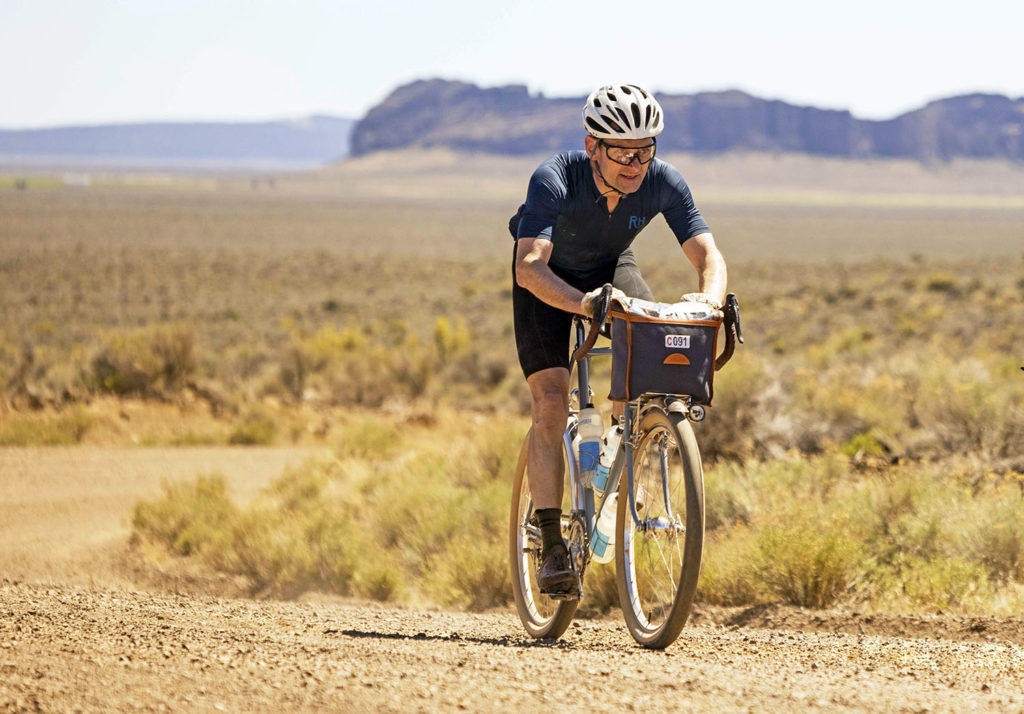Myths Debunked: Disc Brakes DON’T Always Work Better Than Rim Brakes
To celebrate Bicycle Quarterly‘s 15th anniversary, we are looking at myths in cycling: things we used to believe, but which we’ve since found not to be true.
Disc brakes have become popular on allroad bikes for a variety of reasons. One of them is that they are perceived as offering superior braking. It seems to make sense – after all, disc brakes on cars and motorbikes revolutionized braking performance. Why wouldn’t they do the same on bicycles?
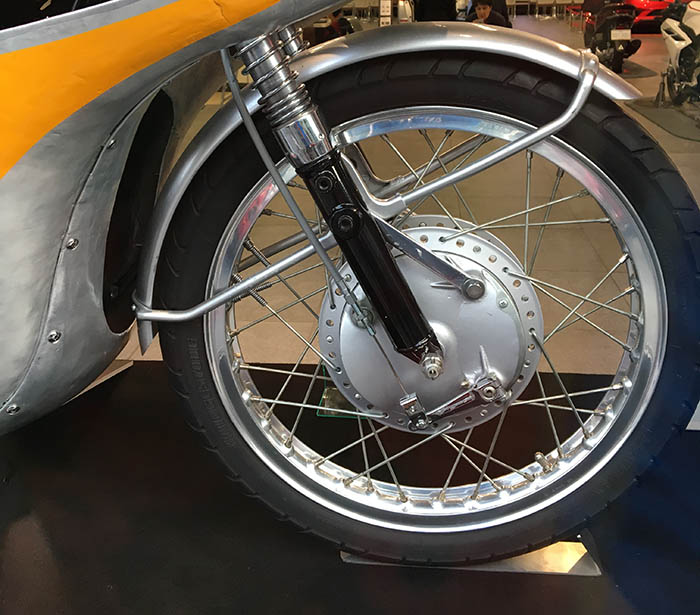
On motorized vehicles, disc brakes replaced drum brakes that enclosed the braking surface inside a drum. The heat generated by braking had to go through the drum before it could reach the cooling air. During vigorous braking, the brakes got hotter and hotter, until they ‘faded’ – braking power was lost as the friction between pad and drum decreased.
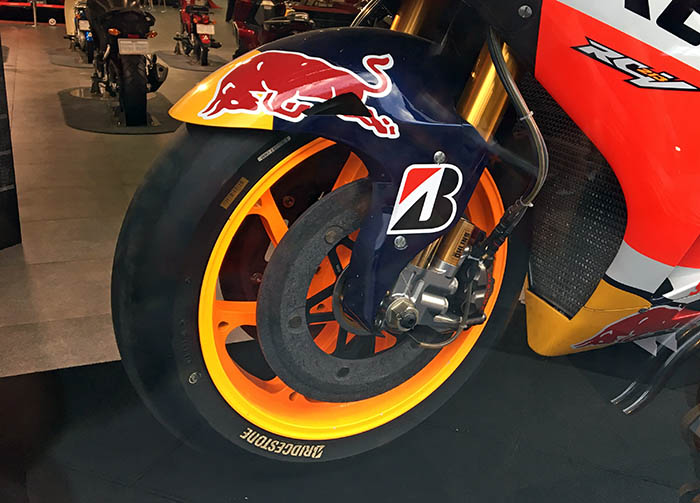
Disc brakes solved this problem: The braking surface is exposed and cooled by the passing air as the motorcycle/car moves forward. And disc rotors are lighter than drums, so they can be larger, which increases the braking power further.
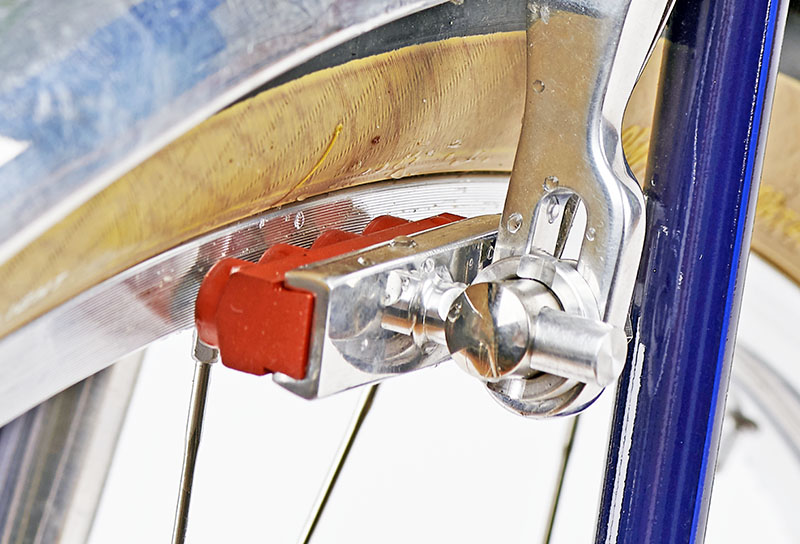
Why doesn’t it work the same on bicycles? If you’ve ever ridden a bike with drum brakes across hilly terrain, you’ll know how dreadful they can be: mushy in feel, and on long downhills, the braking power fades away almost completely. That is why drum brakes never became popular, especially since the bicycle’s rim provides a convenient brake rotor.
That’s right: Rim brakes are disc brakes. Most bicycles have had disc brakes all along. Using the rim for braking makes a lot of sense: The diameter of the disc is as large as possible, and since it’s (usually) made from aluminum, it dissipates heat quite well. Using the rim for the dual purposes of supporting the tire and braking saves weight, too.
However, there is a problem with rim brakes: The caliper has to reach around the tire (and fender). The wider the tire gets, the beefier the caliper needs to be in order to avoid flex that robs braking power.

For that reason, rim brakes work great on racing bikes with narrow tires (above), but many rim brakes for wider tires are poor stoppers. This gets worse in the rain, because the pads need to cut through the layer of water coating the rim to get any braking power at all. Many rim brakes for wide tires are too weak to do this quickly, so in the rain, you end up with almost no braking power at all.
It’s important to remember that this isn’t a problem with rim brakes in general, but with brake caliper flex.
There are ways around the flex issue. Instead of beefing up the caliper until it gets so heavy that nobody wants it on their bike, you can use the – very stiff – fork and frame as part of the brake. Modern direct mount brakes do that, and cantilever and centerpull brakes have been doing it for a long time. Well-designed rim brakes offer plenty of stopping power, even in the wet.
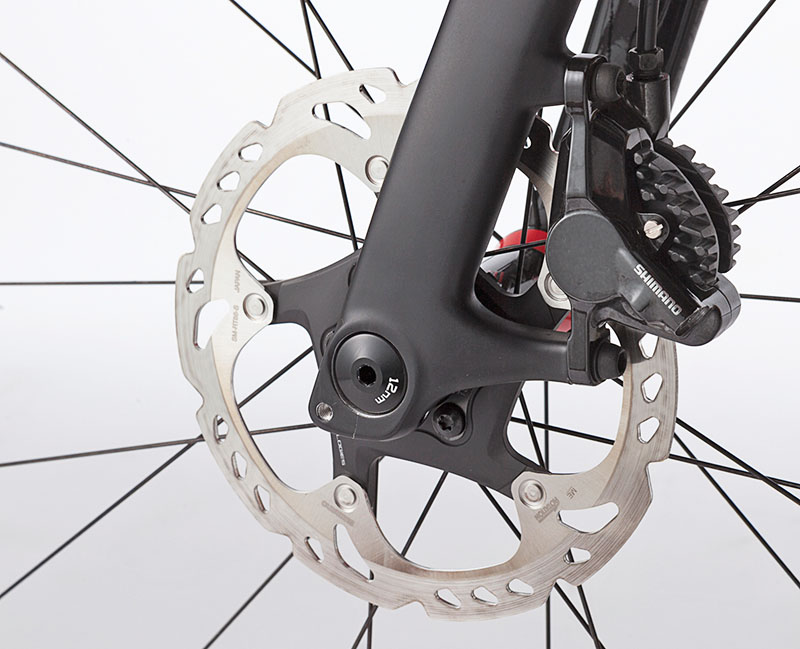
The calipers of disc brakes only reach around a thin brake rotor, so they can be made stiff without much R&D. This means that even inexpensive disc brakes usually offer adequate stopping power. Because the rotors are smaller than bicycle rims, disc brakes have less leverage over the wheel and need to clamp the rotor much harder than a rim brake. This has the positive side effect of wiping water off the braking surface quicker than many rim brakes.
Due to the small rotor and thin pads, disc brakes tend to bite earlier, offering more braking power during the initial application of the brake. As a result, many riders believe they have more power altogether, but that’s not always the case.
So what’s not to like on disc brakes?
- Disc brakes tend to grab: For the same reason that disc brakes bite early, they tend to be grabby at low speeds. Not a huge problem unless you do U-turns.
- Mechanical discs lack power: Hydraulic discs offer great stopping power, but many mechanical discs have a lot of flex in the mechanism that translates the brake cable pull into a force that clamps the disc rotor. Large rotors can make up for this deficiency, but few bike makers are spec’ing rotors large enough to match a really good rim brake. I have yet to ride a bike with mechanical discs that can lift rear wheel during hard braking (with the rider shifting their weight all the way back).
- Weight: Rim brakes are an elegant solution, as they make dual use of the rim. Discs use a separate rotor, plus very stiff (and heavy) calipers, which add weight.
- Loads on fork and spokes: Disc brakes transmit all the braking forces through the wheel and fork legs, so both must be stronger. Disc brake forks need to be relatively stiff. This means they absorb fewer shocks than the best forks for rim brakes.
All these disadvantages aren’t really an issue on many bikes, especially those with wide tires. Compared to cheap rim brakes, inexpensive disc brakes offer more power and better bite. The extra weight of the rotor can be mitigated by using carbon fiber rims, which are lighter than aluminum. And modern carbon forks are stiff anyhow – carbon delaminates if it flexes too much – so adding disc brakes doesn’t result in a loss of shock absorption.
And yet, on a bike optimized for performance, rim brakes remain a viable choice. The best rim brakes are lighter than discs, while offering plenty of stopping power and more linear modulation. They allow for flexible fork blades that improve comfort and speed by reducing suspension losses. And the (much-thicker) pads tend to last longer, too.
Mountain bikes are a different issue: Hydraulic disc brakes have the added advantage of requiring less hand force during long descents on really rough terrain. And suspension forks combine stiff legs with shock absorption, thus eliminating one of the main disadvantages of discs on most road and gravel bikes (which don’t have separate suspension).
Disc brakes are here to stay, at least on bikes with wide tires. (They make less sense on racing bikes with narrow tires.) Rim brakes will continue to have their place on high-end road and all-road bikes. It’s a bit like steel tubing, which you still find on some of the very best bikes, but on mid-range models, carbon now offers better performance.

We’ve published our new book The All-Road Bike Revolution with all the research that has changed cycling in recent years. Find out why wide tires can be fast, how to find a frame that optimizes your power output, and how to get a bike that handles like an extension of your body. More information is here.



